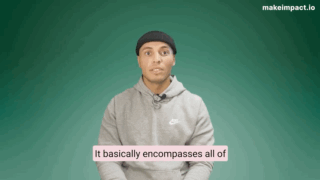How to define sustainable financing?
On your journey to be an impactful investor, you might have struggled to identify what is really impactful and what is not. 🤔🤯 Exactly for that reason, the European Union has put together the EU Sustainable Finance Taxonomy, a guideline and classification system that makes it easier for investors to identify which activities are sustainable and which are not. 😍👏 Curious now? Us too, so let’s explore those new guidelines! 🤓
Okay, I’m listening…
Well, the taxonomy (i.e. classification) establishes four core requirements that economic activities must meet to be considered sustainable.♻️📗 The four conditions to be met, are the following:
Contribute substantially to one or more of the environmental objectives identified in the Taxonomy regulation 💪
Not do significant harm to any of the EU environmental objectives 🙅♀️
Meet minimum social safeguards to ensure its sustainability 🎯
Comply with technical screening criteria established by the EU 🖥
The fourth requirement refers to a huge document of specific criteria that the EU has set out for each specific industry to align with the taxonomy. 😮💨 It’s a very in-depth and hyper-advanced manual for sustainability – if you want to explore it, you can read more about it here. 📖 The other points of the taxonomy are less advanced, but still remain of interest and aim at clarifying what the EU actually means by “environmental objectives” and “safeguards”. 🌳⛑ Can’t come up with a good explanation of what this means? Well then let’s start with the former!
Environmental objectives
The six environmental objectives are listed as follows: 👀
Climate change mitigation
Climate change adaptation
The sustainable use and protection of water and marine resources
The transition to a circular economy
Pollution prevention and control
The protection and restoration of biodiversity and ecosystems
In order for a business to make a “substantial contribution” to one of the objectives, it has to fulfill at least one of the following three conditions:
1️⃣ making a direct contribution (e.g. solar energy producers make a positive impact on the environment by providing a sustainable energy alternative);
2️⃣ enabling other activities to make sustainable contributions through their own activities (such as providing electric buses for public transportation) or;
3️⃣ being involved in transition activities, where a company may not be able to operate at low carbon levels, but still maintains to be among the most sustainable for industry’s standards ( e.g. a plastic producer using recycled materials).
So, in order for an activity to be sustainable according to the EU taxonomy, it must contribute to at least 1 of the three environmental objectives and do no harm to any of the other objectives. 😌 In addition to this, it must meet the minimum safeguards. 😁
So, now what are the minimum safeguards? 🤨
The safeguards refer to guidelines set out by the Organisation for Economic Co-operation and Development (the OECD) and the United Nations (the UN). Specifically, a business must follow the OECD’s Guidelines for Multinational Enterprises and the UN Guiding Principles on Business and Human Rights.☝️ These two sets of recommendations are in place to promote responsible business conduct and human rights. 🙌❤️
If this all seems very technical, that’s because it is! 😔 Luckily, though, we as “normal” retail investors don’t have to worry too much about the laws and definitions – that’s on the companies! 🙆♀️ For us, it becomes identifiable if a large EU-based company is sustainable or not simply by whether or not they identify their activities as sustainable. Why is that? Well, if they advertised themselves as sustainable but didn’t meet the EU conditions to do so, they’d be doing so illegally! 🥳🤩 Therefore, with the EU Taxonomy, we are at less risk of being tricked by greenwashing. 🤥 In other words, it is much easier for us to invest with impact and avoid scams! 🥴
Now you know everything you need to know about the EU Taxonomy. We hope that this way you will not be tricked and have the chance to make the most impactful decisions. 🥰 Be the movement – make!impact! ❤️
Disclaimer:
We are not financial advisors, and we do not claim any responsibility for the financial choices you may make on the basis of what you read in this blog. The content of the blog is of an informative nature and has an educational purpose. It is not to be regarded as either investment advice or recommendations, nor do we relate to the reader’s private, financial situation. Any use of information is at your own risk. We encourage you to seek financial guidance if you do not understand the risks in the area. We are not responsible for any choices you may make, based on what you read on the m!Club or from our company page on LinkedIn — MakeImpact.









